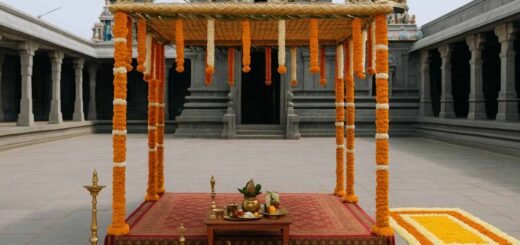2023 Chaitra Navratri Pooja Procedure Fasting Rules Visarjan
Know the details about the 2023 Chaitra Navratri Pooja Procedure Fasting Rules Visarjan, 2023 Chaitra Navratri Pooja Procedure Fasting Rules Visarjan
CHAITRA NAVARATHRI
Chaitra Navratri is a nine-day celebration that is held twice a year in the months of Chaitra and Ashwin in honour of the goddesses Lakshmi, Parvathi, and Saraswati and their various manifestations. This corresponds with the Gregorian calendar months of March or April. It begins on March 25 this year. They are surrounded by the goddess’s power, which supports their ascent to the higher level of spirituality. In order to strengthen their spiritual abilities and remove any obstructions from their lives, it is also thought that the Goddess herself had commanded her worshippers to fast during these periods. The change in season signalled by Chaitra Navratri has its own impact on the mind, body, and soul.
Chaitra Navratri’s significance:
One of the important days and the most popular celebration is Chaitra Navratri. During such days, a lot of people fast. The mind, body, and spirit are all said to be cleansed. The nine days would be spent in prayer, meditation, fasting, and giving alms to the needy in addition to fasting.
2023 Chaitra Navratri Pooja Procedure Fasting Rules Visarjan
Rituals & Chaitra Navratri Vratham:
On the days of Chaitra Navratri, worshippers take a morning bath and pray to the Goddess inside their homes. It’s crucial to dress neatly, and black dresses should be avoided.
It’s crucial to refrain from cutting your hair or nails when fasting.The devotees are free to select any other nine days that are convenient if they are unable to fast during this time.Early in the morning and after dusk, when the entire day is devoted to piety, is when they should begin to observe the fast. Most prayers are aimed for Goddess Durga, who is given importance.It is crucial that only people carry out the other duties, such as fasting,
On this day, worshippers fervently honour the goddesses Parvathi, Lakshmi, and Durga by lighting lamps in front of their respective idols. Devotees place flowers on the goddess’ statue and present “Prasadam.”
Devotees welcome guests to their homes where they prepare special foods as a divine tribute to the gods. Giving meals to those in need is regarded as being extremely sacred.
Having only Satvik food that is free of onion and heavy on the garlic is crucial. Followers are encouraged to consume fruits, and drinking milk is OK. One full course lunch per day is permitted.
The purpose of fasting:
Fasting is a time for inward purification. All it does is link the soul to the universe’s most powerful force. Being in tune with the universe’s energy, which directs and supports people in living lives filled with good, positive energy, is inevitable.Those who observe a fast are required to practise celibacy. Practice dhyana (meditation), study the Devi Mahatmya, and chant shlokas/mantras and hymns to each of Maa Durga’s nine forms (Navdurga) Avoid eating wheat, rice, lentils, garlic, onions, and meat during Navratri. Heat-producing spices must be avoided.
Rules for Chaitra Navrtari Vrat
- To summon Maa Durga and do Sankalpa, rise early (align yourself with the divine occasion and pledge to keep the vrat sincerely).
- Those who observe a fast are required to practise celibacy.
- Practice dhyana (meditation), study the Devi Mahatmya, and chant shlokas/mantras and hymns to each of Maa Durga’s (Navdurga) nine forms Avoid eating wheat, rice, lentils, garlic, onions, and meat during Navratri.
- Heat-producing spices must be avoided. Haldi (turmeric), for instance, which has healing effects, is not included in the meal preparations for Navratri since it generates heat. Similarly,
- it is not advisable to utilise Dhania (coriander), Hing (asafoetida), Garam Masala (mixed spice powder), Rai/Sarson (mustard), Lavang (clove), etc.
- Use Sendha Namak, Kaali Mirch, and Jeera (cumin seeds) (sea salt, instead of processed salt).
- Alcohol and cigarette use are both severely forbidden.
- In their vrat diet, devotees may consume Kuttu, Singhara, Sabudana, and Sama. Fruits and milk are also acceptable foods.
- Mustard and sesame oils, which produce heat, must be avoided. Instead, substitute ghee (clarified butter) or peanut oil.
- Use Sendha Namak, Kaali Mirch, and Jeera (cumin seeds) (sea salt, instead of processed salt).
- Alcohol and cigarette use are both severely forbidden.
- In their vrat diet, devotees may consume Kuttu, Singhara, Sabudana, and Sama. Fruits and milk are also acceptable foods.
- Mustard and sesame oils, which produce heat, must be avoided. Instead, substitute ghee (clarified butter) or peanut oil.
- Click here for Complete Navarathri Procedure For Households


